Some people are born with a great eye for decorating or design. Others learn the skill and are able to apply it successfully. And then there are the rest of us. If you don’t have much of a knack for design, a few basic techniques can go a long way.
Pictures: Wicker Paradise, Davi Alexandre, Kristin Wong, PoshSurfside.com, lilapants, Cherie Priest, Emily May, Mueble de España, Rodney
These decorating rules and principles are simple enough that almost anyone can apply them. Your home might not look like a Domayne catalogue, but it will look presentable.
Follow The Rule of Odd Numbers
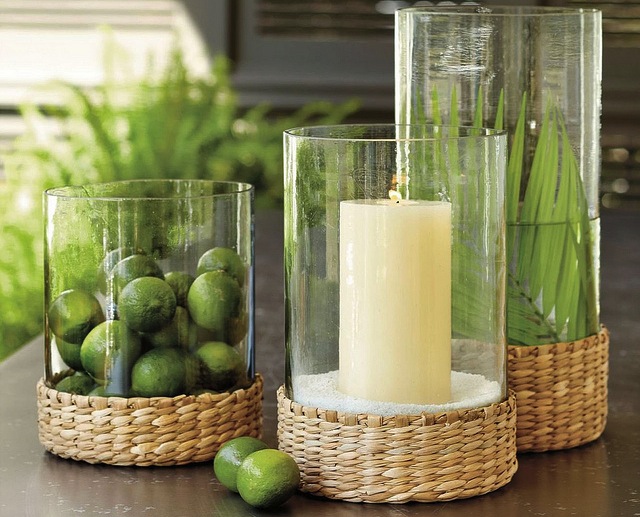
You might already be familiar with the rule of thirds for photography. Designing with odd numbers as a foundation can create harmony and visual interest, explains designer Cecilia Walker:
The basic idea of the rule is that details and objects that are arranged or grouped in odd numbers are more appealing, memorable, and effective than even-numbered pairings.
It helps to have groupings of objects in varying heights, shapes and textures. At the same time, there should be something similar about them. This advice seems to contradict itself, but the point is there should be something that groups your items together, but also something about each of them that is slightly different.
Look at the image above as an example. Three vases, all different heights. The main materials are similar — wicker and glass. But there are subtle differences in elements — sand, water and the texture of the limes.
Walker points out that this is just a basic rule, and it might not work in every instance. But if this grouping doesn’t look right to you, go with your gut. The goal here is to make sure everything isn’t uniform and boring.
Find Your Room’s Focal Point
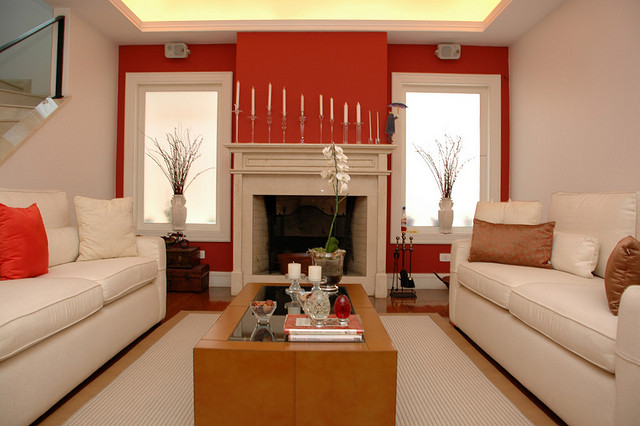
A room’s focal point is its most emphasised feature. It’s the thing your eyes are naturally drawn to when you walk into the room. And everything around the focal point compliments it.
If you’re lost with how to start decorating a room, finding its focal point is a good start. Many rooms have built-in focal points: a large window with a view, for example, or a fireplace. If your room doesn’t have a built-in focal point, here are some tips and options for creating one:
- Paint one wall a different colour, then accessorise with artwork or shelves, says interior designer Coral Nafie.
- Decide what you want to use the room for, then create a focal point around that, says The Inspired Room. For example, if you want to use a room for reading, you’d make a bookshelf your focal point.
- Nafie also suggests simply using a large piece of furniture as a focal point.
- You could use a large piece of artwork as a focal point. A large mirror also works well.
Once you find the focal point, decorate around it. Use its main colour in elements throughout the rest of the room. In the above example, the focal point — the fireplace — is white. The red walls make its colour stand out, and the white candles, orchid and vases all around the room compliment the fireplace.
You can also frame it. In the photo, the vases, windows and sofas serve this purpose. A fireplace is easy to frame, as it usually comes with a mantle. You can add decor on or above the mantle. If your focal point is a large window with a view, you might arrange your furniture to frame it. If it’s a large mirror or an interesting piece of artwork, you might frame it with two smaller elements on either side, like this:
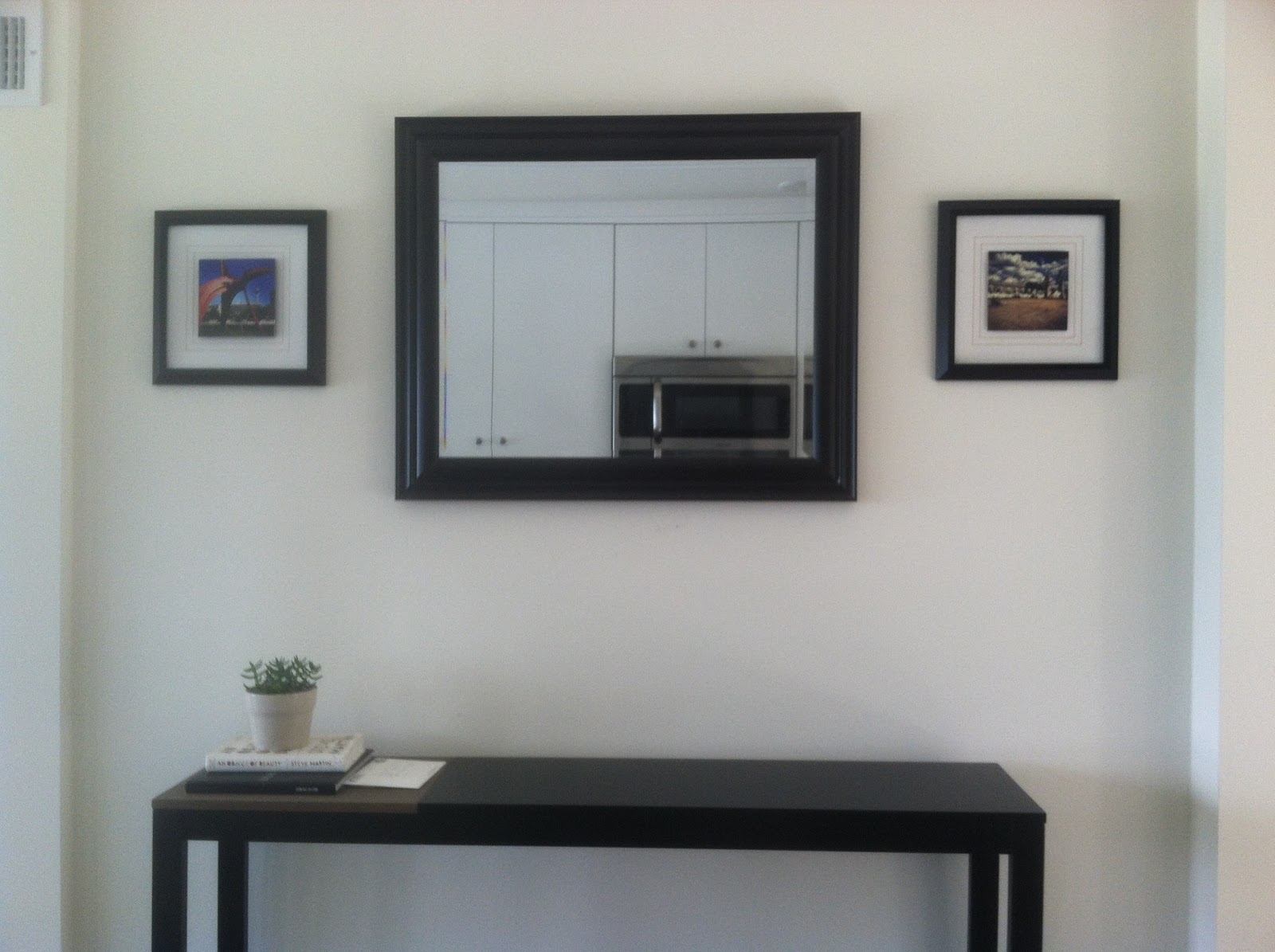
Once you have a focal point, a centre point helps balance the room. Apartment Therapy explains:
The center point is the core of your room’s layout. It doesn’t have to be the exact middle of the room, although that’s the case in many homes. The center point of a living room is where the coffee table or center table will sit, with seating arranged around it.
Think of it as the room’s anchor.
Know Basic Measurement Rules
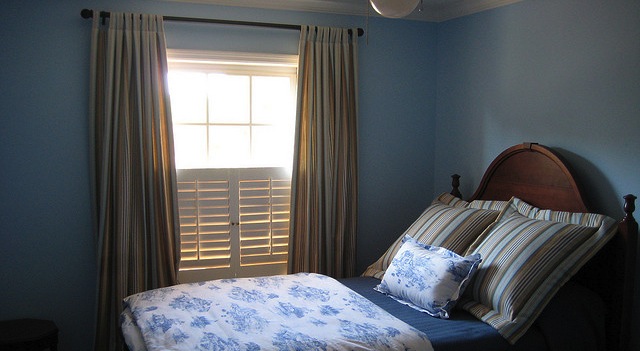
When it comes to hanging curtains or arranging furniture, most of us just eyeball it as we go. But there are specific measurements for decorating that make a room look better. Here are a few general measurements to keep in mind:
- Coffee table distance: Keep at least 38cm between coffee tables and sofas, says decorator Maria Killam. Apartment Therapy suggests leaving about 45cm between them.
-
Hanging art: When hanging art, keep its centre at eye level, which is generally 142cm to 152cm from the floor, says Driven By Decor. If you’re hanging multiple pieces of art, keep the centre point of the whole arrangement at this level.
When hanging art above your sofa, make sure it’s no more than two-thirds the width of the sofa. You’ll also want to leave 12cm-23cm of space between the art and the furniture, Driven By Decor adds.
- Hanging curtains: Crate and Barrel says it’s typical to have 2.5cm to 8cm of overlap on either side of your window. For height, they say you should mount curtain rods 10cm from the top of the window. But maybe you want your windows to look wider or taller. To create the illusion of height, Real Simple says you can go beyond the 10cm standard, but don’t exceed 20cm, or it will look awkward. To create the illusion of width, feel free to break the 2.5cm to 8cm standard too. You might want to go as far as 30cm on either side.
- TV distance: How far your TV should be from your sofa will depend on its size. We’ve talked about viewing distance before. The easiest rule of thumb: multiply the diagonal size of your TV by two. That’s about how many inches your TV should be from your seating area.
For rugs, there are three basic rules you can follow.
All on: If a rug is big enough, you can put all legs of your furniture on top of it. But you should leave 30cm to 45cm of floor surface on all four sides of the rug, says decorating site Houzz.
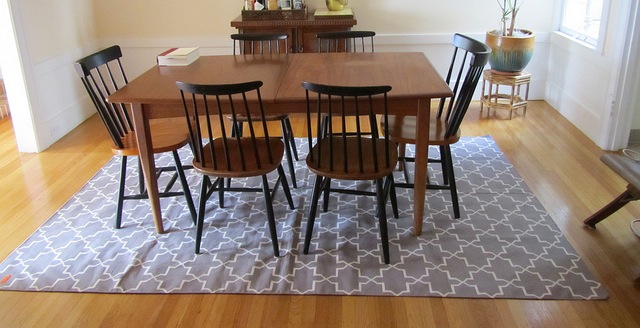
All off: If you have a smaller space, you might choose a smaller rug, and then you’d leave all four feet of your furniture off of it. Houzz adds, “You don’t want to pick too small a rug, though, or it may look insignificant, like an afterthought.”
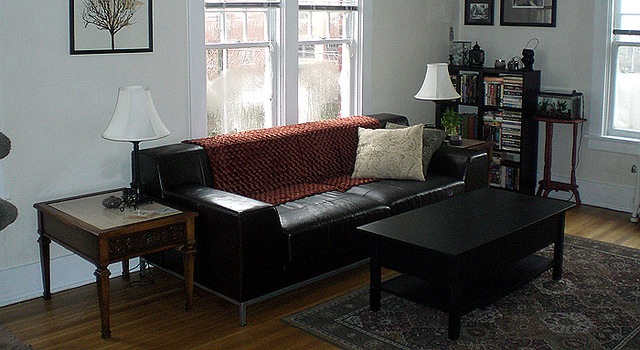
Front on: Many designers choose to just put the two front feet on the rug. This can tie everything together and create a feeling of openness.
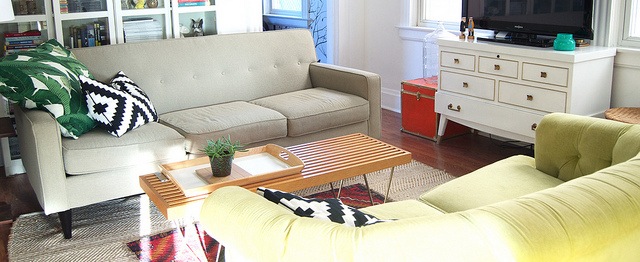
Again, most all of these sources add one big caveat: don’t be afraid to break these rules. They don’t always work, but they’re good guidelines to follow.
Consider Your Negative Space
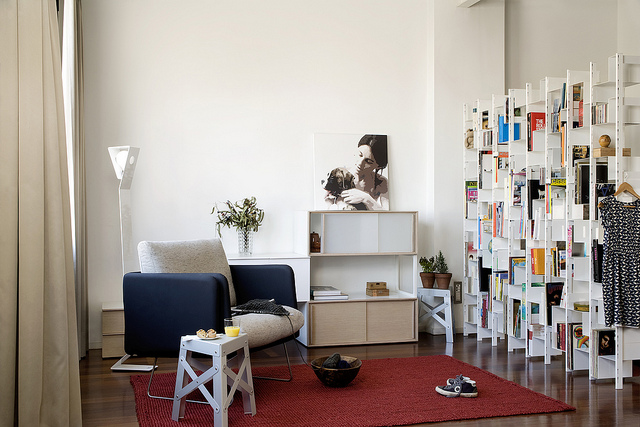
Sometimes, less is more. In design, the negative space is the area that’s not taken up by any subject. Most commonly, this is the white area on your walls. Its tempting to fill every space with a subject, but the negative space sometimes speaks for itself. Apartment Therapy explains:
In writing, sentences often contain extra words that without, the sentence would sound just fine. Train yourself to look for those moments in your own home. Is there a narrow wall with a small blot of art that when taken down, would still look like a fine wall? Is there a tabletop with a fledgling vignette that would look just as spectacular if cleared off?
Decorating with negative space can be a bit complicated, but there are a few ways anyone can do it:
- Avoid clutter. This is probably the best and most common way to make the most of negative space. A bunch of stuff might fit perfectly on your table, but that doesn’t mean it all needs to go there. Leave some room — some negative space.
- Be intentional. Make sure the negative space serves a purpose. You might leave a space empty to highlight a decorated area nearby. Or maybe the negative space creates an interesting design.
- Look at shapes. SF Gate’s Home Guides explains that two contrasting shapes can create an odd — or interesting — negative space. “a curved coffee table can soften the harsh negative space lines created by angular sofas and chairs in a square room. But this space plan may not work in smaller rooms, which would force edge of the round table too close to the sofa for comfortable sitting.”
To clarify, it’s not just about looking for places where you can remove things. It’s about looking for spots that look great even when they’re empty. It’s also about considering the function of the empty spaces between subjects.
Layer Your Lighting
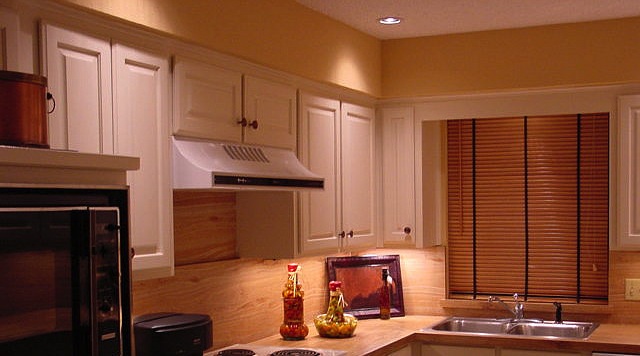
Lighting could be a whole post in itself, but here’s what you should consider when you don’t know much about it. First, learn the three basic types of lighting:
- Ambient: Its also called general lighting, and its the overhead lighting meant to evenly illuminate a room.
- Task: As its name suggests, task lighting is meant to light a specific task. A lamp in the living room might light a reading area. Under-cabinet lights in a kitchen serve as task lights for countertops.
- Accent: Accent lights are meant to highlight a particular object. You might see them on painting, for example.
Adding different types lighting can give your room dimension. Start with ambient lighting in each room, then consider how you can use task and accent lighting. Real Simple has some specific tips on how to do this in each room.
Beyond these basics, you’ll probably also want to make your home look like your own. We have some tips on how to do that too. These guidelines help you get started, but you should adjust your decorating according to your own tastes and preferences. Use these rules to get started, but don’t be afraid to break them and go with your instincts if something feels right to you.
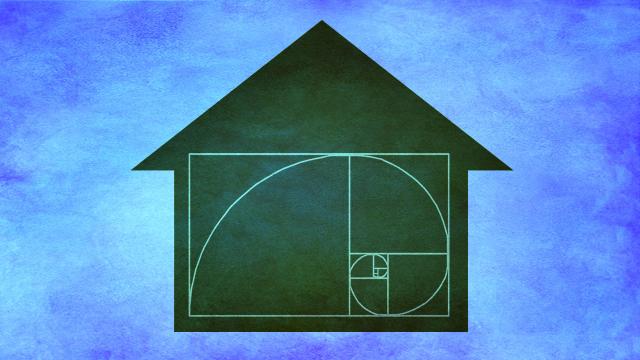
Comments
2 responses to “How To Use Basic Design Principles To Decorate Your Home”
Is “Everything in the room compliments it”.
Should be “complements it”, me think.
Yes, the author makes this mistake twice. The word ‘mantle’ should be ‘mantel’ or ‘mantelpiece’. Both ‘centre’ and ‘center’ are used in the article, and since the author doesn’t seem to be American, it should be ‘centre’.
Also ‘….all four feet of your furniture off of it. ‘ should be simply ‘……..off it.’ The ‘of’ is unnecessary and incorrect.
What is this sentence supposed to mean ‘Adding different types lighting can give your room dimension’?
Bad spelling and grammar detracts from the credibility of the author.